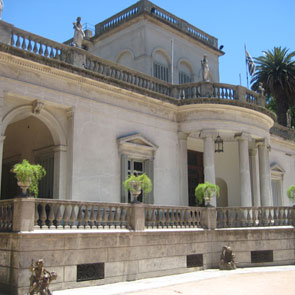Join the UruguayNow mailing list:
UruguayNow in the press
UruguayNow's mix of travel and tourist information on Uruguay, hotel reviews for Montevideo and Punta del Este (coming soon for Colonia), restaurant reviews and tips on excursions, sightseeing and lifestyle in Uruguay has been featured in El Pais, La Republica, MercoPress and on Uruguay's Channel 5 TV and other news media in the country. Internationally, we have had kind mentions in the New York Times and the Daily Telegraph.
Best of the Web
Not yet made it to Uruguay? When you're done with UruguayNow, our choice of the top 6 internet resources for the country is just a mouse click away. In no particular order, they are:
Southern Cone Travel: http://southernconeguidebooks.blogspot.com/
Mercopress: http://en.mercopress.com/
Ola Uruguay: www.olauruguay.com
Retired in Uruguay: http://wallyinuruguay.blogspot.com/
Uruguay Natural: www.uruguaynatural.com
Global Property Guide: http://www.globalpropertyguide.com/Latin-America/Uruguay
For reviews of these sites, please click here.
Other recommended sites

Outlying districts
Carrasco, at the eastern end of the city, has little to see as such but is perfect for a stroll along the beach, which is usually quite empty. The dilapidated hulk of the Casino de Carrasco is slated to become a Sofitel. There are some good dining options but if you are based in Punta Carretas or Pocitos there is no reason to make the trek out this far for dinner. The Rambla hugs the coast from the Centre all the way to Carrasco, passing the marina at Buceo and the crowded beaches at Malvin (take care of your belongings if you visit on a busy day). Between Buceo and Malvin, the building next to the water with what appears to be a minaret on its roof is a small naval museum. Meanwhile, the grassy bank below the west-facing row of houses at the Playa de los Ingleses in the Punta Gorda district, close to Carrasco, is a wonderful place to watch the fiery Uruguayan sunset.
The Rambla continues past the departmental line in Canelones, although most traffic takes the faster Ruta Interbalnearia. Solymar and El Pinar have pleasant beaches and are good for walking, kite flying and swimming.
The Prado neighbourhood north of the downtown is a curious mix of grand old homes and poorer sections, plus the occasional shantytown. Take Avenida Millón north to the Juan Manuel Blanes museum, a gorgeous residence partly given over to the work of (and named for) a nineteenth-century artist whose paintings show a marked dramatic realism. The museum is pleasant, but the surrounding Japanese garden is simply delightful. The Prado, attractive oasis of greenery that it is, is only unmissable during the gaucho fair at Easter, when a thoroughly enjoyable rodeo competition in the local showground attracts riders from all over the country. A pleasant agricultural show is held in the same location every September.
The Cerro faces the Old Town across Montevideo harbour. The hill (“cerro") is the highest point in the city and there is a fine view from the fort on the summit. Completed in 1811 and ringed by old cannons, it was the last military structure built by colonial Spain in the country. It is also the only one that has survived intact. There is a small military museum inside the fort but most people come for the view. Note that you will need a taxi to take you to the summit of the Cerro as there is no convenient public transport.
Wine country: On the border of Montevideo and Canelones departments there is a flourishing wine industry. Many of the boutique vineyards offer tours and wine tastings to visitors. Food (cheese, ham, empanadas, sometimes barbecued meat and sausages) is often part of the package. Particularly recommended are:
Bodegas Carrau: Very friendly and informative; they have a small vineyard at their winery just within the city limits. They also grow grapes in Canelones and in the sandy soils of Rivera, in the far north of the country. A traditional winery with a long and distinguished history of producing Tannat, Uruguay’s signature varietal. www.bodegascarrau.com; tel. 320 0238
Establecimento Juanicó: Across the departmental line in Canelones, the attractive estate house is the venue for polished and professional tasting sessions that comprise eight or more different wines. A roaring fire makes the building cozy in the winter. The estate has a viewing platform which gives a great view of the vines plus, if you’re lucky, various species of birds which make their home here. www.juanico.com; tel. 094 847 482
For more information on visiting Uruguay’s vineyards: www.caminosdelvino.com.
